Leopard sharks are a small species of shark found in shallow waters along the Pacific coast of North America. They measure 3-5 feet (0.9-1.5 m) as adults and have a characteristic spotted pattern along their backs and sides. Their spots help them camouflage in sandy ocean bottoms where they spend most of their time.
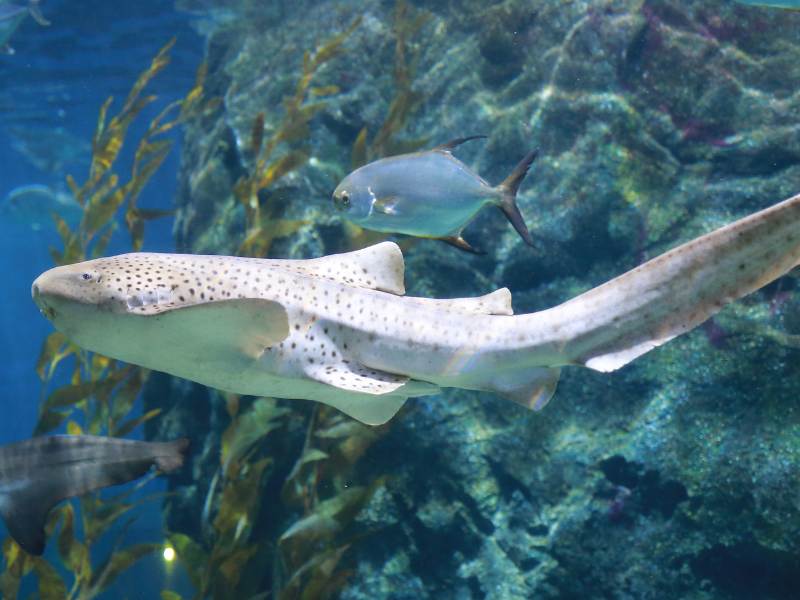
Due to their small size and timid disposition, leopard sharks are often considered one of the least threatening sharks. But are leopard sharks actually dangerous or aggressive towards humans? Let’s explore this question in more detail.
Are Leopard Sharks Aggressive?
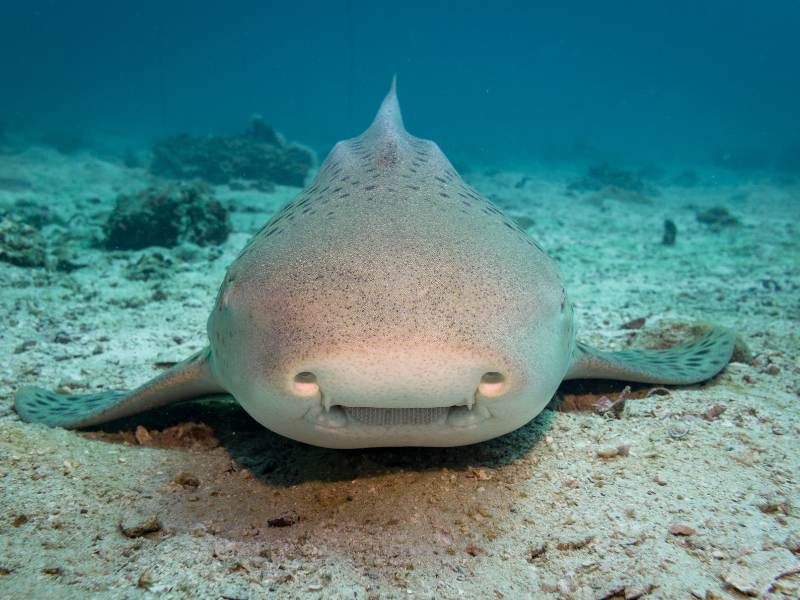
Leopard sharks tend to be timid and shy rather than aggressive. They max out at around 5 feet long and don’t weigh more than 20 pounds as adults [1]. Compared to most other shark species, they are quite small. With their size and passive disposition, leopard sharks view humans more as a threat rather than prey.
Leopard sharks are also solitary hunters who prefer living alone rather than in groups [2]. This loner nature further contributes to their overall timid and non-confrontational behavior. They spend most of their time slowly cruising along the sea floor in search of small crustaceans, fish, and mollusks rather than actively hunting large prey [3].
Their preferred habitat of sandy, shallow waters along beaches also fosters a cautious attitude. Here they have to coexist peacefully with surfers and swimmers sharing the same space. Any aggressive actions would disrupt this coexistence and attract unwanted attention. Overall, leopard sharks display no predatory instincts or behavior towards humans due to their small build and reclusive lifestyle.
Are Leopard Sharks Dangerous?
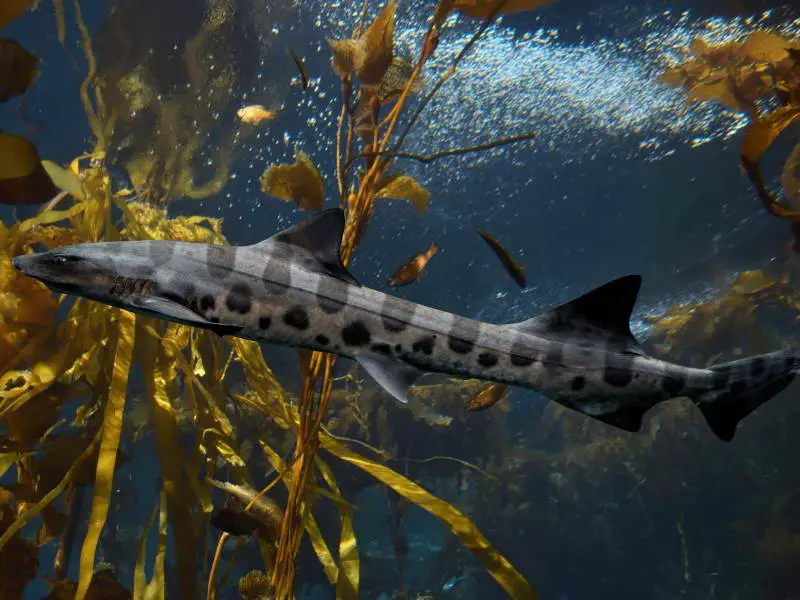
While leopard sharks may seem harmless given their timid nature, it’s important to exercise appropriate caution around any wild animal, even typically docile ones. According to the International Shark Attack File, there has only been one documented unprovoked attack by a leopard shark on a human in recorded history [4].
This incident occurred in 1955 in Trinidad Bay, California when a leopard shark nipped a diver. However, no significant damage was reported. Additionally, leopard sharks have weak jaws and small serrated teeth more suited for grasping and tearing rather than inflicting deep wounds like other sharks [5].
So in reality, leopard sharks act primarily out of natural defensive instinct rather than predatory aggression. Attacks tend to only occur when they feel threatened or cornered rather than initiating unprovoked bites. Given their small size, non-confrontational habits, and general wariness of humans, leopard sharks pose an extremely low risk to beachgoers and swimmers.
Also Read: Are Bull Sharks Dangerous? Unraveling the Truth
Recorded Incidents and Attacks
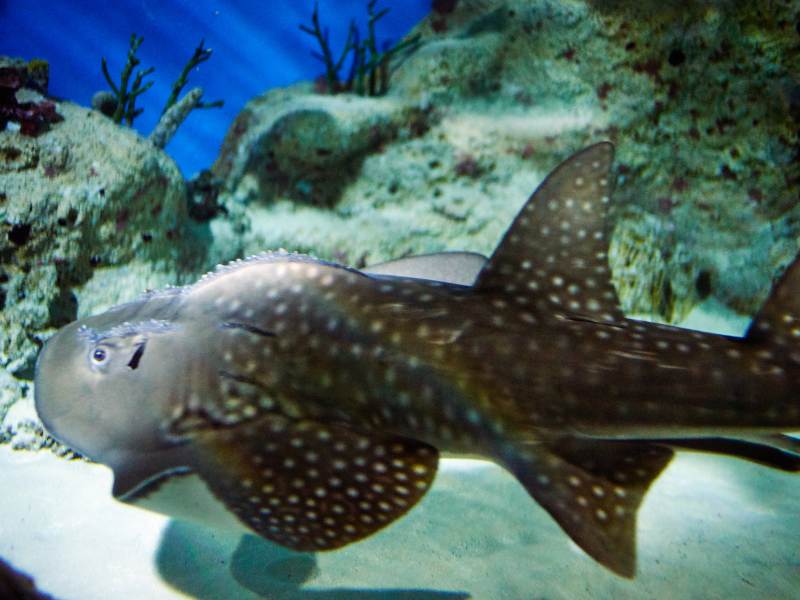
Beyond the 1955 incident mentioned above, there are no other confirmed unprovoked attacks on record by leopard sharks [4]. Even in that isolated case, the diver escaped without serious injury. It’s also possible human behavior may have unintentionally provoked the normally passive shark.
In comparison to other shark species frequently involved in bites, none of the leopard shark attacks have been fatal. This further confirms their harmlessness towards humans. While any wild animal should be treated cautiously, the evidence clearly shows leopard sharks present a shallow danger level. Their first instinct is always flight rather than fight.
Friendliness of Leopard Sharks

Studies have also found leopard sharks to be quite friendly and non-aggressive even in close contact with humans. When kept in captivity at aquariums and research facilities, they often allow divers and handlers to freely interact, touch, and brush against them without issue [6].
Their behavior in the wild also reflects a docile temperament. Leopard sharks tend to slowly swim away when alarmed rather than charge or strike at perceived threats like some other shark species. Even during feeding times at open-ocean exhibits, they peacefully accept food from human hands without displaying any hostile tendencies [7]. This suggests that leopard sharks are not dangerous.
Of course, maintaining respectful boundaries is still advised for one’s own safety. However, on the whole, their friendly and docile nature illuminates why incidents with leopard sharks are exceptionally rare. Unlike most sharks, they seem to view humans more as uninteresting than appetizing.
Also Read: Can Sharks Roar?
Three Lesser-Known Facts About Leopard Sharks

There are a few other intriguing facts about leopard sharks that help shine additional light on their temperament:
- They are members of the family Triakidae, otherwise known as houndsharks. This family includes other smaller, less aggressive sharks.
- For their size, leopard sharks can cruise at decent speeds up to 14 mph. However, they conserve energy by generally keeping movement minimal when not hunting or disturbed [8].
- Studies found leopard shark livers often contain elevated mercury levels from their diet of contaminated fish and invertebrates. This poses more of an ingestion health risk to humans than an attack risk.
The Risk and Danger of Shark Attacks
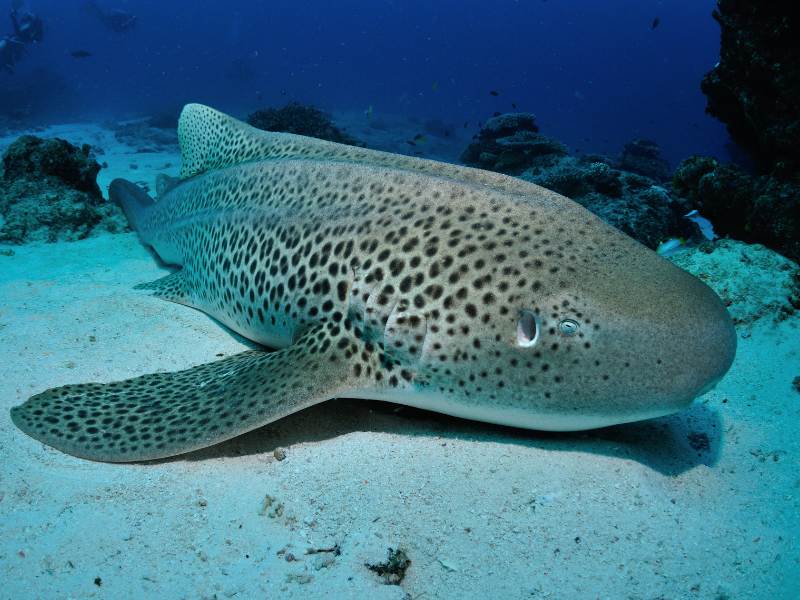
On a relative scale, shark attacks are exceptionally rare occurrences. Your odds of getting struck by lightning are 6 times higher than being bitten by a shark [9]. On the other hand, rip currents alone kill over 100 people annually in the U.S.
Additionally, most shark bites are believed to be cases of “mistaken identity” rather than premeditated attacks. Many sharks may strike out of curiosity rather than aggression after confusing a swimmer for regular prey from below [10].
With their small stature, leopard sharks have even less ability and propensity to inflict damaging bites compared to larger predatory shark species. Thanks to their timid nature and tendency to peacefully coexist among humans in coastal regions, incidents involving leopard sharks are virtually unheard of.
Also Read: Can You Keep a Shark as a Pet?
Conclusion
In summary, while any wild animal interaction requires basic safety awareness, the evidence overwhelmingly shows the leopard shark poses little threat to people. Documented attacks are statistically insignificant, and their friendly behavior reflects an overall non-aggressive temperament.
Rather than viewing them as scary and dangerous, we should appreciate leopard sharks for the peaceful role they play in southern California marine ecosystems. With responsible behavior by both sharks and humans, the two species can comfortably coexist in shared coastal waters for many more years to come.
References
[1] Ebert, D. A. (2003). Sharks, Rays and Chimaeras of California. University of California Press.
[2] Heithaus, M. R. (2001). Shark attacks on bottlenose dolphins (Tursiops aduncus) in Shark Bay, Western Australia: attack rate, bite scar frequencies, and attack seasonality. Marine Mammal Science, 17(3), 526-539.
[3] Nosal, A. P., Cartamil, D. P., Long, J. W., Lührmann, M., Wegner, N. C., & Graham, J. B. (2013). Demography and movement patterns of leopard sharks (Triakis semifasciata) aggregating near the head of a submarine canyon. Environmental Biology of Fishes, 96(7), 855-866.
[4] International Shark Attack File [ISAF]. (2022). Shark Attack Summary: California 1900-Present. Florida Museum. https://www.floridamuseum.ufl.edu/shark-attacks/by-state/california/
[5] Compagno, L. J. (1984). FAO species catalogue. Vol. 4. Sharks of the world. An annotated and illustrated catalogue of shark species known to date. FAO Fish. Synop, (125) Vol. 4, 251-655.
[6] Nelson, D. R., Johnson, R. H., & Preston, H. R. (1972). Temporal changes in three baited underwater television stations. California Department of Fish and Game, 58, 103-112.
[7] Klimley, A. P. (2013). The biology of sharks and rays. University of Chicago Press.
[8] Bernal, D., Carlson, J. K., Goldman, K. J., & Lowe, C. G. (2012). Energetics, metabolism, and endothermy in sharks and rays. In Biology of sharks and their relatives (pp. 211-237). CRC press.
[9] National Ocean Service. (2019, October 4). How common are shark attacks? https://oceanservice.noaa.gov/facts/sharkattacks.html
[10] Wroe, S., McHenry, C., & Thomason, J. (2005). Bite club: comparative bite force in big biting mammals and the prediction of predatory behaviour in fossil taxa. Proceedings of the Royal Society B: Biological Sciences, 272(1563), 619-625.
